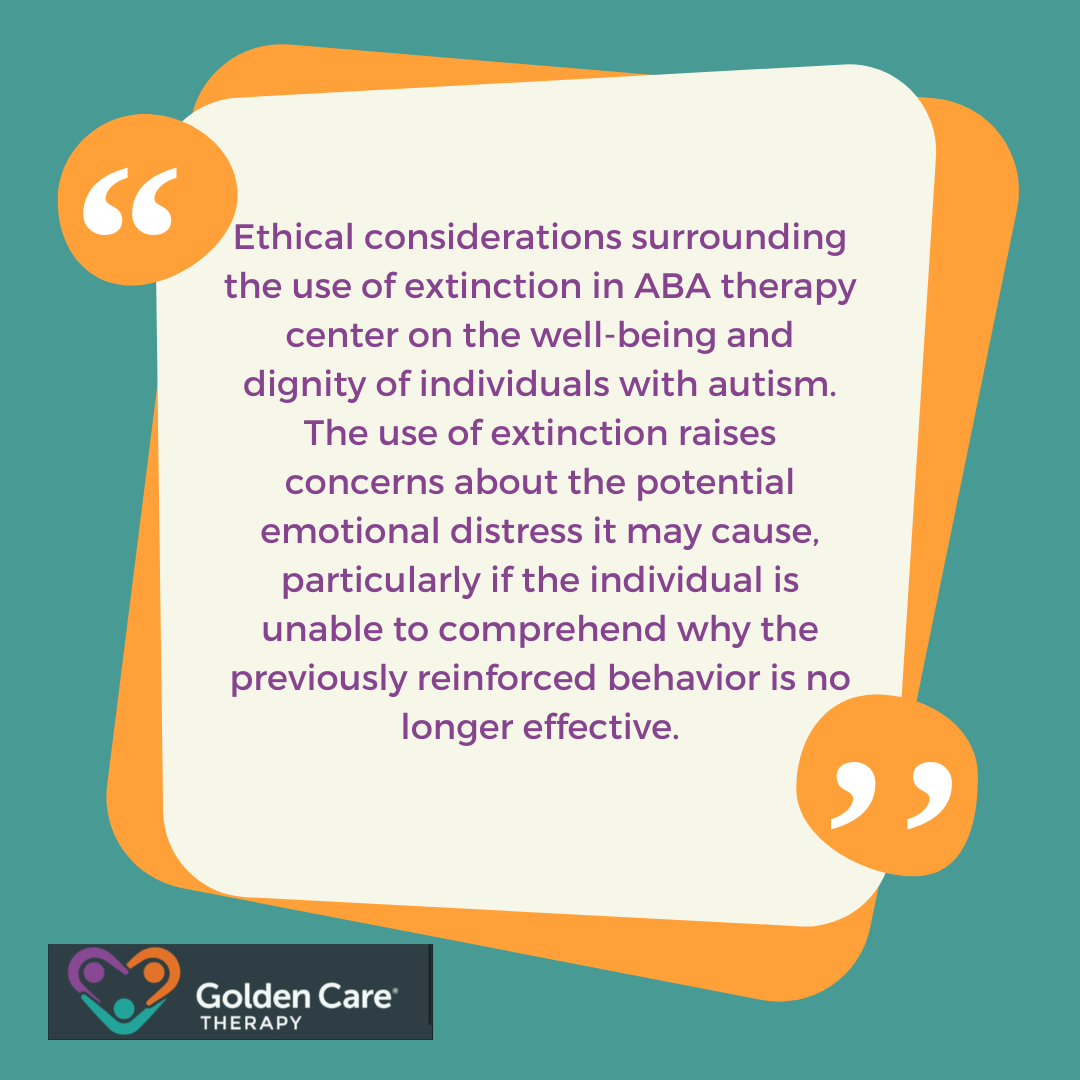Extinction is a common technique used in Applied Behavior Analysis (ABA) to decrease unwanted behaviors by stopping the reinforcement that maintains them. However, before implementing extinction, conducting a functional analysis is essential to identify the underlying causes of the behavior and determine if extinction is the most appropriate intervention. While it can be effective in many situations, it’s not always the right choice.
Understanding when extinction might not be the best approach is essential for creating a supportive and respectful environment for individuals receiving ABA therapy. Certain circumstances and behaviors require a more careful, thoughtful strategy to ensure that the person’s needs are met while still promoting positive growth.
Knowing when to avoid extinction helps prevent unintended consequences and ensures that therapy remains a positive experience.
When Should Extinction Not Be Used in ABA?
Extinction should not be used in Applied Behavior Analysis (ABA) when the behavior in question is dangerous or harmful to the individual or others.
For example, if a child engages in self-harm such as hitting themselves or others, or if they are at risk of causing injury due to the behavior, extinction could exacerbate the situation by leading to more severe or unsafe actions.
In these cases, a more immediate and safe intervention is necessary to prevent harm while also addressing the behavior through other therapeutic approaches that ensure safety.
Additionally, extinction should not be used in situations where it might cause significant emotional distress or trauma. This could occur if the behavior is related to underlying anxiety, fear, or unmet needs, and the individual is not able to tolerate the frustration that might come with extinction.
For example, if a child is engaging in behavior due to sensory overload, ignoring the behavior through extinction might escalate their emotional distress.
In these circumstances, it’s important to consider alternative strategies, such as providing coping mechanisms, teaching communication skills, or modifying the environment to reduce triggers before applying extinction techniques.
Role of Extinction in ABA
Extinction is a behavioral technique employed within ABA therapy to reduce or eliminate unwanted behaviors by removing the reinforcing stimuli that maintain those behaviors. By withholding reinforcement previously associated with undesired behaviors, extinction aims to decrease the frequency of such behaviors over time.
While extinction can be effective in certain contexts, it is crucial to consider its limitations and potential ethical concerns. Understanding when extinction may not be the most suitable approach is essential for ensuring that interventions are tailored to meet the individual needs of clients undergoing ABA therapy.
Reconsidering Extinction in ABA Therapy
Extinction may not always be the most effective approach in ABA therapy. One of the primary limitations of extinction is the potential for the undesired behavior to temporarily increase in frequency, intensity, or variability before it decreases.
This phenomenon, known as an extinction burst, can be challenging for both individuals with autism and their caregivers or therapists to manage.
Moreover, the success of extinction relies on consistency and implementation fidelity. If reinforcement is inadvertently provided for the undesired behavior during the extinction process, it can undermine the effectiveness of the intervention and lead to inconsistent outcomes.

Furthermore, the prolonged application of extinction without considering individual differences and needs can contribute to heightened stress and frustration, impacting the overall therapeutic relationship and the individual’s trust in the therapy process.
ABA therapists, parents, and caregivers should carefully evaluate the appropriateness of utilizing extinction in treatment plans, taking into account the unique characteristics and preferences of the individual with autism.
Alternatives to Extinction
While considering Applied Behavior Analysis (ABA) therapy, it’s essential to explore alternative approaches to extinction that can be equally effective in promoting positive behavioral changes.
The two key alternatives to extinction in ABA therapy we’re going to explore are as follows:
Positive Reinforcement
Positive reinforcement involves rewarding desired behaviors to increase the likelihood of their occurrence in the future. By providing praise, rewards, or privileges following a desirable behavior, individuals with autism are motivated to repeat that behavior.
This approach focuses on acknowledging and reinforcing positive actions rather than solely eliminating undesirable behaviors.
Also, positive reinforcement can be customized to suit the individual’s preferences and needs, making it a highly personalized and effective technique in ABA therapy. By identifying and utilizing meaningful reinforcers, therapists and caregivers can create a supportive environment that encourages desired behaviors while fostering a sense of accomplishment and well-being.

Functional Communication Training
Functional Communication Training (FCT) is another alternative to extinction that emphasizes teaching individuals alternative ways to communicate their needs and desires effectively.
This approach acknowledges that challenging behaviors often stem from difficulties in expressing thoughts, emotions, or needs. Through functional communication training, individuals are taught appropriate communication strategies to replace problematic behaviors.
FCT not only addresses communication challenges but also enhances individuals’ ability to interact with others in a more positive and constructive manner. By equipping individuals with effective communication skills, FCT empowers them to express themselves in ways that are understood and respected by others, ultimately reducing the reliance on maladaptive behaviors.
Incorporating positive reinforcement and functional communication training in ABA therapy offers holistic and person-centered approaches to behavior modification that prioritize individual strengths and needs.
Collaborating with ABA Therapists
Effective communication between caregivers, individuals with autism, and ABA therapists is essential for the success of ABA therapy. By fostering an environment of open communication, concerns, progress updates, and any observed changes can be shared openly and addressed promptly.
Each individual with autism presents a unique set of needs, strengths, and challenges. Therefore, the development of individualized treatment plans is crucial in ABA therapy to ensure that interventions are tailored to meet the specific requirements of the individual.
Collaborating closely with ABA therapists and actively participating in the treatment process allows caregivers and autistic individuals to contribute to a more effective and personalized ABA therapy experience.

The Key Takeaway
In some situations, using extinction in Applied Behavior Analysis (ABA) can do more harm than good, especially if it leads to frustration or increases unsafe behavior.
It’s important to carefully assess each case and consider the individual needs of the person involved. Collaboration with a trained professional is key to making sure that interventions are both effective and compassionate.
The goal is always to help individuals thrive in a positive and supportive environment, where their unique needs are understood and respected. At Golden Care Therapy ABA, we are dedicated to providing high-quality, personalized ABA therapy that empowers individuals to reach their full potential. We offer personalized ABA therapy in Florida, New Jersey, Indiana, New York, and Georgia.
Our experienced team is here to support you every step of the way as we create tailored therapy plans that focus on your loved one’s strengths and goals. Don’t wait – contact us today to learn how our services can make a meaningful difference in your life!
Sources:



